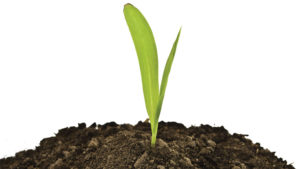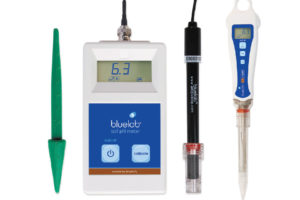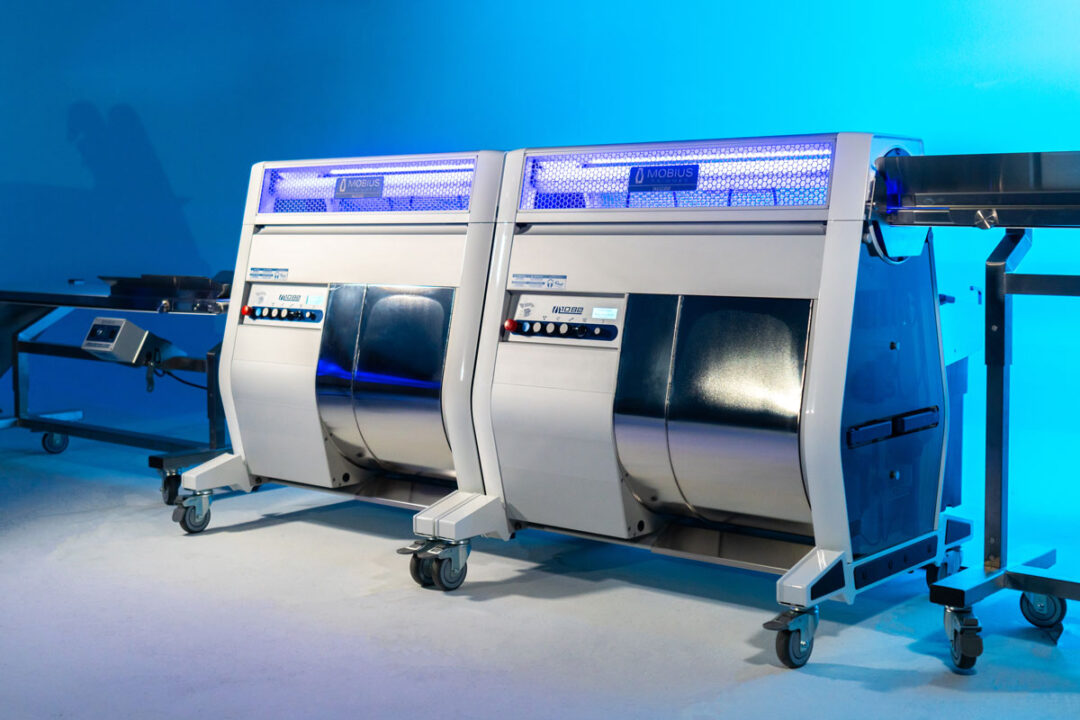How Direct-Stick Meters Can Help Take the Guesswork Out of Soil pH
 Soil pH is critically important to plant health. The availability of most nutrients is influenced by soil pH. The ideal pH range for greenhouse and nursery crops can vary substantially, based on the unique nutrient requirements of each crop.
Soil pH is critically important to plant health. The availability of most nutrients is influenced by soil pH. The ideal pH range for greenhouse and nursery crops can vary substantially, based on the unique nutrient requirements of each crop.
Some crops are very efficient at taking up micronutrients from the soil, so much so that a lower-than-ideal soil pH may lead to a micronutrient toxicity. Zonal geraniums, New Guinea impatiens, pentas, and African marigolds are examples of such crops.
As soil pH climbs above 6.0, micronutrient availability decreases and can lead to micronutrient deficiencies in many crops. Iron deficiency, for example, is often seen in spring crops such as calibrachoa, pansy, petunia, and others. Soil pH can also influence the development of certain soil-borne diseases.
Why Do I Need to Monitor pH and EC?
Given the importance of soil pH, it would be great if growers could just “set it and forget it.” Unfortunately, so many forces are acting on the pH of the soil that it’s just not possible. Let’s consider some of the factors that make frequent monitoring of soil pH necessary.
• Growing mixes can arrive with widely varying soil pH values. Many soil mix companies state a starting pH range of 5.5 to 6.5. For some crops, pH adjustments will need to be made right away. Petunias started at 6.5, for example, will not achieve optimum growth.
• Water quality will also influence soil pH. Low-alkalinity water sources provide little or no buffering capacity (i.e., resistance to pH change). This can lead to rapid soil pH swings. High-alkalinity water sources may lead to increasing soil pH over time if the excess alkalinity isn’t neutralized.
• Fertilizer selection needs to be considered in concert with the alkalinity of the water and the pH requirements of the crop(s) being produced. Some fertilizers are alkaline in soil reaction; others are acidic. Your supplier can help you build a fertilizer program that takes all of these factors into account.
• Last but not least, there is a phenomenon sometimes referred to as the species effect. Many crops will influence the pH of the soil they’re planted in — and not always in the direction that would be in their favor. For example, flowering vinca exerts upward pressure on soil pH in spite of the fact they prefer a lower soil pH.
There are several reliable ways to monitor soil pH. Many growers find the 2:1 and PourThru methods to be effective on-site. Both techniques require a certain amount of time and expertise to provide accurate results.

The Bluelab soil pH meter (left) has a hand-held wired probe, while the probe is directly attached to the Bluelab soil pH pen (right).
Are Direct-Stick Meters Accurate?
My team and I are often asked about direct-stick meters that measure soil pH via a probe that’s inserted directly into the soilless media to yield an instant reading. While the appeal of a quick and easy method to test pH is understandable, the question of accuracy needs to be addressed.
In the past, we were reluctant to recommend direct-stick meters because the meters we had the opportunity to test didn’t provide results we felt were accurate enough for growers to base growing decisions on. Our thoughts on this technology have changed, in part because of an improved understanding of how to use and maintain these meters.
Four Direct-Stick Meters to Try
There are many meters that the GGSPro team hasn’t evaluated, but here are four meters that we can recommend based on good reports from cooperating growers that are using these tools in real-world conditions.
Bluelab has two affordable direct-stick pH meters, both of which have replaceable soil probes. The Bluelab Soil pH Meter is a handheld meter with a wired probe. The Bluelab Soil pH Pen has its soil probe attached directly to the pen, and is also capable of testing soil temperature. They’re both easy to use and come with comprehensive instructions for calibration and maintenance.

The Halo direct-stick soil pH meter (left) from Hanna Instruments uses a Bluetooth wireless probe that works with a smartphone app. Hanna also has a handheld meter with a wired probe (right) that has on-screen prompts for calibration.
Hanna Instruments recently introduced its Halo direct-stick soil pH meter (HI12922). It uses a Bluetooth wireless probe that works with a free smartphone app. Hanna also has a handheld meter with a wired probe (HI99121) with on-screen prompts during operation and calibration. Direct-stick soil pH meters other than those mentioned may also be suitable for this use.
Keys to Success With Direct-Stick Soil pH Meters
The best way to obtain accurate results with direct-stick soil pH meters is to understand how to use and maintain them properly. Here are four suggestions to help you get reliable results when testing soil pH.
• Take many samples and average the results. A larger sample size helps to account for the natural variability that occurs within a given crop.
• Calibrate often. Even the best meters require frequent calibration. Some meters even remind you when calibration is needed.
• Clean the probe often in accordance with the owner’s manual. Improper cleaning can shorten the life of the probe and provide erroneous readings.
• Keep the probe hydrated in the recommended storage solution.










